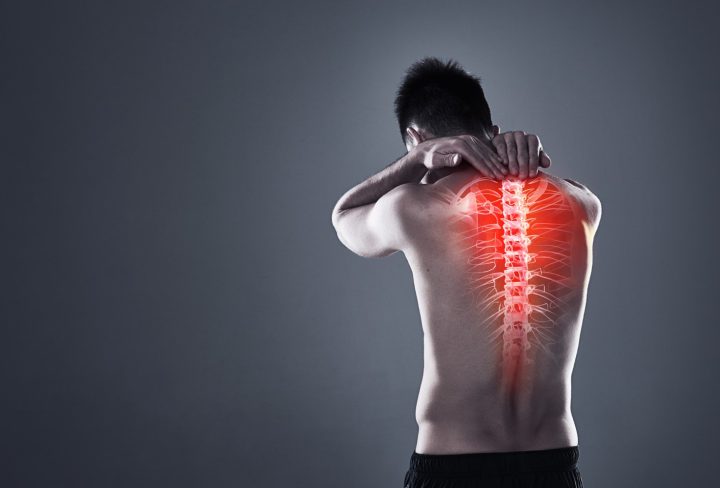Cervical Spondylosis is an age-related wear and tear in the neck (cervical spine). It is considered arthritis of the neck.
Although neck pain can be caused by many things in both middle-aged and older people but most often occurs in old age.
The disks and joints in the neck, like other joints, slowly degenerate as we age. These age-related, wear-and-tear changes occur over time which is extremely common.
More than 85% of people >60 years suffer from Cervical Spondylosis.
Anatomy of Cervical Spine (Neck)
The spine is made of 24 bones (vertebrae). These bones connect to create a canal protecting the spinal cord.
The seven small vertebrae that form the neck comprise the cervical spine.
Cervical spondylosis is a condition that affects the cervical spine, the seven small vertebrae that form the neck.
Cervical Spondylosis (Arthritis of the Neck)
Check Your Symptoms!
- Neck Pain and Stiffness
- Headache that Originates in the Neck
- Pain Radiating to the Shoulder or Arms
- Difficulty Turning or Bending the neck
- Grinding Noise or Sensation when Turing the Neck
Symptoms are usually more severe in the morning and at the end of the day and tend to improve with rest.
Causes of Cervical Spondylosis (Arthritis of the Neck)
Starting with middle age, the disks between your vertebrae start to change.
• Degeneration (slowly wearing down)
• Herniation (bulged, slipped, or ruptured disk)
• Osteoarthritis
• Bone spurs (bony growths on the edge of the bone)
Cervical Spondylosis (Arthritis of the Neck): Are You at Risk?
AGE is the most common risk factor for cervical spondylosis.
Other factors
• Genetics (Family history)
• Smoking (Clearly linked to increased neck pain)
• Occupation (Works with lots of neck motion and overhead work)
• Depression or Anxiety
• Previous Injury or Trauma to the Neck
Cervical Spondylosis (Arthritis of the Neck): Investigations
Physical Examination
• Arms, Hands, and Fingers Strength
• Touch Sensation and Reflexes
• Blood flow
• Flexibility in your neck and arms
• Gait (the way you walk)
Imaging Tests
• Neck X-rays
• Magnetic resonance imaging (MRI) scans
• CT Myelogram
Nerve Function Tests
Electromyography (EMG) (To measure the electrical impulses of the muscles at rest and during
contractions)
Nerve conduction study (To measure the strength and speed of nerve signals)
Your doctor might order a blood test to check for inflammatory arthritis.
Treatment Options: Cervical Spondylosis (Arthritis of the Neck)
• Medications (For pain and inflammation)
• Physical therapy (Stretching and strengthening exercises)
• Wearing a Soft Collar Around Your Neck
• Injections (Pain-relieving drugs)
• Surgery (In severe cases)
The best treatment option is a combination of medications and physical therapy.
Cervical Spondylosis (Arthritis of the Neck): Complications
- Pressure on the spinal cord (cervical stenosis)
- Cervical myelopathy (compression of the spinal cord in the neck)
- Cervical radiculopathy (pinched nerve)
Cervical Spondylosis (Arthritis of the Neck)
Reduce Your Risk with these Lifestyle Preventive Measures
- Stay Physically Active
- Exercise Regularly
- Use Good Posture while Working
- Avoid Excessive Stress on your Neck
- Use Over-the-counter Pain Relievers if Required
- Applying heat or ice
- Use a Soft Neck Brace
How Common is Cervical Spondylosis?
(Arthritis of the Neck)
Changes in your spine are a normal part of aging. During your 30s, the spine likely begins this wearing-down process.
These age-related wear-and-tear changes occur over time which is extremely common.
By age 60, almost 9 in 10 people have cervical spondylosis.
Do You Have Cervical Spondylosis?
(Arthritis of the Neck)
When to Call a Doctor?
Most of the neck pains go away on their own or may require non-surgical treatments. If your neck pain is severe or lasts for several days, consult a doctor.
Seek immediate help in case of:
• Severe Neck Pain for days
• Severe Numbness or Tingling in Arms
• Trouble with Coordination and Walking
• Loss of Bladder or Bowel Control
FAQs: Cervical Spondylosis (Arthritis of the Neck)
What Happens if Left Untreated?
If left untreated, the spinal cord or nerve roots may become severely compressed, causing permanent damage to your spinal cord.
What Food is Good for Cervical Spondylosis?
- Fruit and Vegetables
- Nuts
- Omega 3 Fatty Acids
- Vitamin-E Rich Foods
- Whole Grains
Understanding the symptoms and risk factors of cervical spondylosis can lead to timely intervention and better outcomes. Regular exercise, proper posture, and medical guidance play a vital role in managing this condition effectively and enhancing overall neck health.

